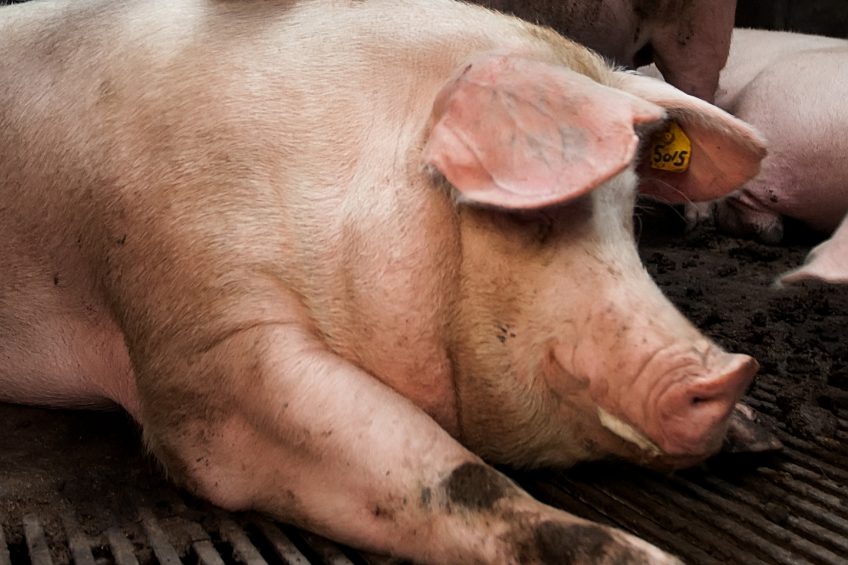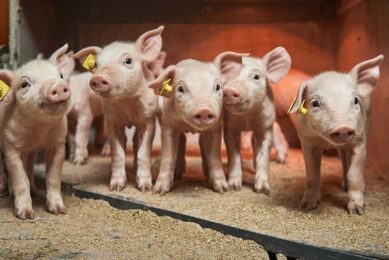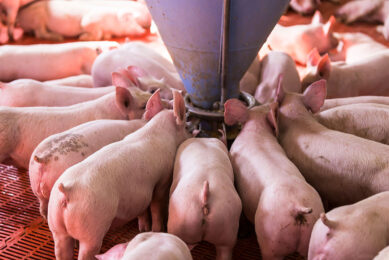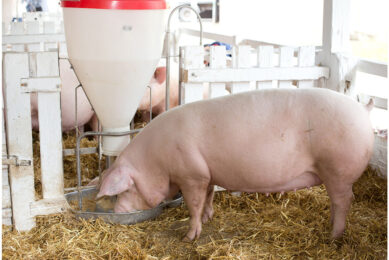12 questions to ask to avoid sow mortality

Mortality of sows has become a hot topic in the US swine industry recently. Knowing what causes the problem is the key to providing solutions. Most probably it is a multifactorial problem that needs being addressed from a multitude of disciplines. Which questions to ask to avoid the issue as much as possible?
Sow mortality has always been an issue in sow herds and any percentage of sow mortality represents a challenge to all vested interests. It is well known that replacement gilts do not start becoming profitable until their second or third parties within a system. Thus, the discussion around rising sow mortality rates in the USA over the last year has had all segments of the industry addressing this issue.
But the real question still remains, what is the exact cause of this increased mortality and ultimately what can we target as possible interventions? Veterinarians and nutritionists alike have been individually and jointly working together to address this problem. Both perspectives are be represented in this article, which discusses the current issue, potential solutions, and potential focus areas to help prevent sow mortality in our production systems.
 Do the sows have the right breeding qualities?
Do the sows have the right breeding qualities?
The reproductive capacity of the commercial sow has changed dramatically over the course of 20 years. With an industry target of 35 piglets weaned per sow per year, the reproductive demand on the sow is high. This reproductive capability has been achievable in part based on genetically selecting for a more robust gilt, which demonstrates reproductive maturity and leg soundness.
From a reproductive standpoint, evaluation of the external genitalia and underline is critical. Gilts that can successfully be bred and successfully nurse a large litter should have a well-developed vulva as they reach sexual maturity and a minimum of seven pairs of functional teats. Even though the first litter a gilt farrows may not reach the numbers in which all teats are used, if she is to stay in the herd and remain successful, she must have the capacity to raise the larger litter size that will come in later parities.
 Do the sows have healthy legs?
Do the sows have healthy legs?
Structural soundness is also a critical area that needs to be examined as gilts enter the herd and frequently re-evaluated as she matures. Lameness is by far one of the greatest reasons for early culling and euthanasia on-farm. Setting up a sow for long-term success in the herd is absolutely dependent on ensuring that she is structurally sound when she arrives to the farm as a gilt. According to Joe Stock and Ken Stalder at Iowa State University, leg and feet traits that negatively impact sow longevity includes buck-kneed front legs, straight rear pasterns, flat-sides rip shape and swaying hindquarters.
 Have the sow selection criteria been OK?
Have the sow selection criteria been OK?
But with all of the above knowledge, the question still remains if the appropriate breeding stock is being selected to reach current production goals. What is recognised by the industry is the negative impact that poor gilt selection can have on the longevity of the sow and profitability of the producer, but it is still possible to identify sows that should never have been selected in the first place. Is this because the numbers are needed? Is this because employees need to be trained better for selection? And, is this failure to be stringent during the selection process what is driving the increase in sow mortality?
 Are amino acid levels adequate?
Are amino acid levels adequate?
It is absolutely essential to provide a nutritional programme that meets the requirements of today’s sow as well as to the developing gilt. There is still a need for extensive basic research to accurately recommend nutrient requirements for today’s genetics. There are four main areas of nutrition that warrant further research, which include protein and/or amino acids, energy, macro-minerals, and micronutrients such as vitamins and trace minerals.
Recently, at Kansas State Swine Day a sow trial conducted jointly with a commercial sow farm (DNA genetics) and Kansas State University indicated that there was no benefit of feeding lysine (SID) above 1.05%, while many in the industry, today, are formulating up to 1.20%. Thus, there appears to be a dissidence in the industry as to the correct recommendation to achieve optimal performance.
Therefore, before a nutritionist lowers their values, further research is needed, as all amino acids will be reduced, which brings up another point of consideration: are non-essential amino acid needs accounted for enough? This could be relevant because collagen and ligaments are primarily made up of non-essential amino acid, while most nutritionists are utilising greater levels of crystalline amino acids in sow diets today with lower crude protein levels. How does this impact nutritional strategies for improving longevity and reducing lameness in herds?

 Are fatty acid levels adequate?
Are fatty acid levels adequate?
Furthermore, diets are often formulated on meeting either a metabolisable energy (ME) or net energy (NE) value or a ratio to lysine for a sow’s energy requirement, but traditionally what is not considered are the effects of different types of fatty acids fed to sows. For example, long chain polyunsaturated fatty acids are precursors for several inflammatory mediators, and a team around Cara O’Connor-Robison of Michigan State University demonstrated in 2014 an increase in DHA in the cartilage of gilts and sows by feeding a protected fish oil product for their lifetime.
However, researchers were not able to determine any biological or visual differences in sows, which in retrospect could be attributed to the small sample size represented in the trial. Also, there is indications that different types of fatty acids, not only alter sow performance, but piglet survivability and growth performance. This research further identifies a need to better understand fatty acid nutrition for sows beyond just formulating for a NE requirement.
 Are calcium and phosphorus correctly formulated?
Are calcium and phosphorus correctly formulated?
Bone is the main structural component of sows and is composed of approximately 60-70% mineral, largely calcium and phosphorus. Similar to amino acid and energy nutrition, there is a large range of calcium and phosphorus recommendations in the industry. For instance, in 2012, the United States National Research Council (NRC) recommended 0.60-0.76% calcium, while PIC (2016) recommends 0.85% total calcium for sows while new research from the University of Illinois is suggesting changing calcium requirements to digestible vs. total values. To date, this research has been lacking in sows, but the first set of data from Stein’s laboratory in sows will be presented at this year’s Midwest ASAS meetings and he has stated that the results are ‘very interesting’. Further work in the areas of macro- and micro-mineral are much needed as nutrition is optimised for today’s sow.
 Are vitamin D levels adequate?
Are vitamin D levels adequate?
Additionally, it is well known that vitamin D plays a crucial role in calcium absorption, homeostasis, and bone formation, but it is also involved in the immune system. Within human literature, it is suggested that higher vitamin D levels are associated with a decreased risk of pelvic floor disorders. A 2014 survey by the USA swine industry reported a range of 1,100-2,222 IU/kg in gestation and lactation diets fed, while NRC (2012) recommends 800 IU/kg. Furthermore, a survey by Iowa State University’s Veterinarian Diagnostic Laboratory reported low, if not deficient serum vitamin D levels in mature indoor sows and other classes of swine, when compared to the referenced values. Work by DSM also indicates that source of vitamin D may also be important, such as supplementing with calcitriol (25-OH vitamin D3) could potentially benefit sows by increasing serum calcium levels and reducing stillborns at farrowing.
 Can collagen and elastin play a role?
Can collagen and elastin play a role?
When focusing on a problem where causation is not well defined, understanding what is known is important, but maybe what is not known is even more important when developing a solution, in which other areas of science may provide further insights.
During a review of human literature, it is noted that premenopausal women with prolapses compared to non-prolapsed women had a lower amount of collagen and that there is a lower amount of desomosine content in the uterosacral ligament tissue, suggesting an alteration in elastin metabolism. Collagen is important in the composition of ligaments supportive tissues of the uterus and elastin is essential for these ligaments to stretch with the increase in litter weight during pregnancy.

Collagen and elastin is not only important to pregnancy and uterus support, but also ligaments and connective tissue throughout the body and joints. Sow lameness is still the number one cause of mortality and culling in sow herds today. So, let’s go out on the edge, what if altered collagen and elastin synthesis could be related to both lameness in sow herds and the rise of uterine prolapses? Could these two issues, appearing unrelated, actually be related? Thus, are there potential nutritional considerations that are not taken into account today?
 What is the role of vitamin C?
What is the role of vitamin C?
Vitamin C is not considered an essential nutrient for swine because they have the ability to synthesise C with l-gulonolactone oxidase. However, humans cannot due to a mutation in the gulonolactone oxidase (GULO) gene. With more prolific genetics, did this gene potentially get altered in sows?
Furthermore, hereditary vitamin C deficiency has been noted in a herd in Denmark that was noted to exhibit clinical symptoms such as unthriftiness, unwillingness to move, swelling around joints, and signs of pain on touching, similar to scurvy in humans, and vitamin C supplementation cured these symptoms. Regarding collagen synthesis, vitamin C is essential in its formation, among other key metabolic pathways such as vitamin D activation and immunity. Additionally, it is also involved in differentiation of connective tissue in embryonic cells. Thus, deficiency can have a direct impact on the sow and her offspring.
 Have mycotoxins created more problems?
Have mycotoxins created more problems?
Zearalenone is the primary mycotoxin that comes into question when we are having reproductive issues in sows. However, many times when a sample is grabbed, there is no mycotoxins present or at levels that are not considered problematic. But there is a growing body of evidence that zearalenone at as low as 75 ppb can impact the reproductive tract in as little as six days’ post contamination. Research conducted with 10.8kg gilts indicated that both length and weight of the reproductive tract was increased with zearalenone contaminated feed.
This is alarming as traditionally this size of gilt is fed a standard nursery programme and not on a specialised gilt development programme. But there is limited research that evaluates pulses of contaminated feed throughout a gilt or sow’s lifetime and how it impacts longevity. Additionally, mycotoxin mitigation could potentially absorb essential vitamins and other nutrients as well, that may or not be taken into account in formulation.
To further regress, vitamin C should also be considered as part of a mycotoxin mitigation programme, as it has been shown to alleviate zearalenone damage in pigs.
 How about relevant trace minerals?
How about relevant trace minerals?
Lastly, trace minerals should not be forgotten, as there are numerous trials demonstrating the use of organic trace minerals in preventing lameness in sows. But are we forgetting any trace minerals today that maybe biological essential? For example, boron is the fifth element on the periodic table and it belongs to group 13, that also contains aluminium. Most ICP analysis can detect aluminium, but are not programmed to analyse boron. Similarly, there is no approved boron feed additive for feed.
It was accepted that boron was essential for plant nutrition as early as 1926 and was considered unique until the 1980s because to date it did not appear essential for livestock. But a chick study suggested that it stimulated growth and partially prevented leg abnormalities in vitamin D deficient chicks. Since this first trial there has been mounting evidence that boron plays a role in bone mineralisation and structure. It has also been linked to energy metabolism, insulin sensitivity, the immune system, and embryonic development.
There are 118 elements on the periodic table, are there more worth considering?

 Are the sows being observed closely enough?
Are the sows being observed closely enough?
Another area of focus with regards to sow mortality is sow management and care. In a recent study published out of Denmark, the scientists concluded that the majority of unassisted deaths (sows that died without being euthanised) occurred in the farrowing barn and among the younger parity sows (1-3). This means that either sows are dying in the farrowing barn from extremely acute pathology where the process of dying is quick (i.e. intestinal or organ torsion, heart failure, farrowing complications) or we are not observing the sows frequently enough to catch subtle cues of illness.
The pig industry has done an excellent job in managing piglets and improving day 1 piglet care, but maybe, not enough time is spent observing, managing and evaluating the condition of the sow. Perhaps the same counts for determining the true cause of death on-farm. Readily training employees to perform necropsies for every sow and training caretakers to identify (or photograph) abnormalities is a critical step in truly understanding what is causing this increase in sow death. Working closely with the herd veterinarian is a key step that producers can take to identify where problems exist and tackling these issues on a herd level.
More questions than answers
In closing, this article most likely created more questions than answers into this complex and multi-factorial issue in our industry, but it is essential to evaluate this problem from both an eagle eye’s and microscopic viewpoint. The article intentionally touched briefly on different areas of nutrition, physiology, and health, and if you connect the dots all these areas are interconnected.
The bigger question is how will research be conducted, moving forward to determine the correct nutrient requirements, beyond traditional assessments, and management of our sows? Obviously, there is a lot on the table for our industry and it is going to take all areas of expertise determine not only the measurable solutions, but ones that are easily implemented into practice for true success.
References available on request.
 Beheer
Beheer








 WP Admin
WP Admin  Bewerk bericht
Bewerk bericht